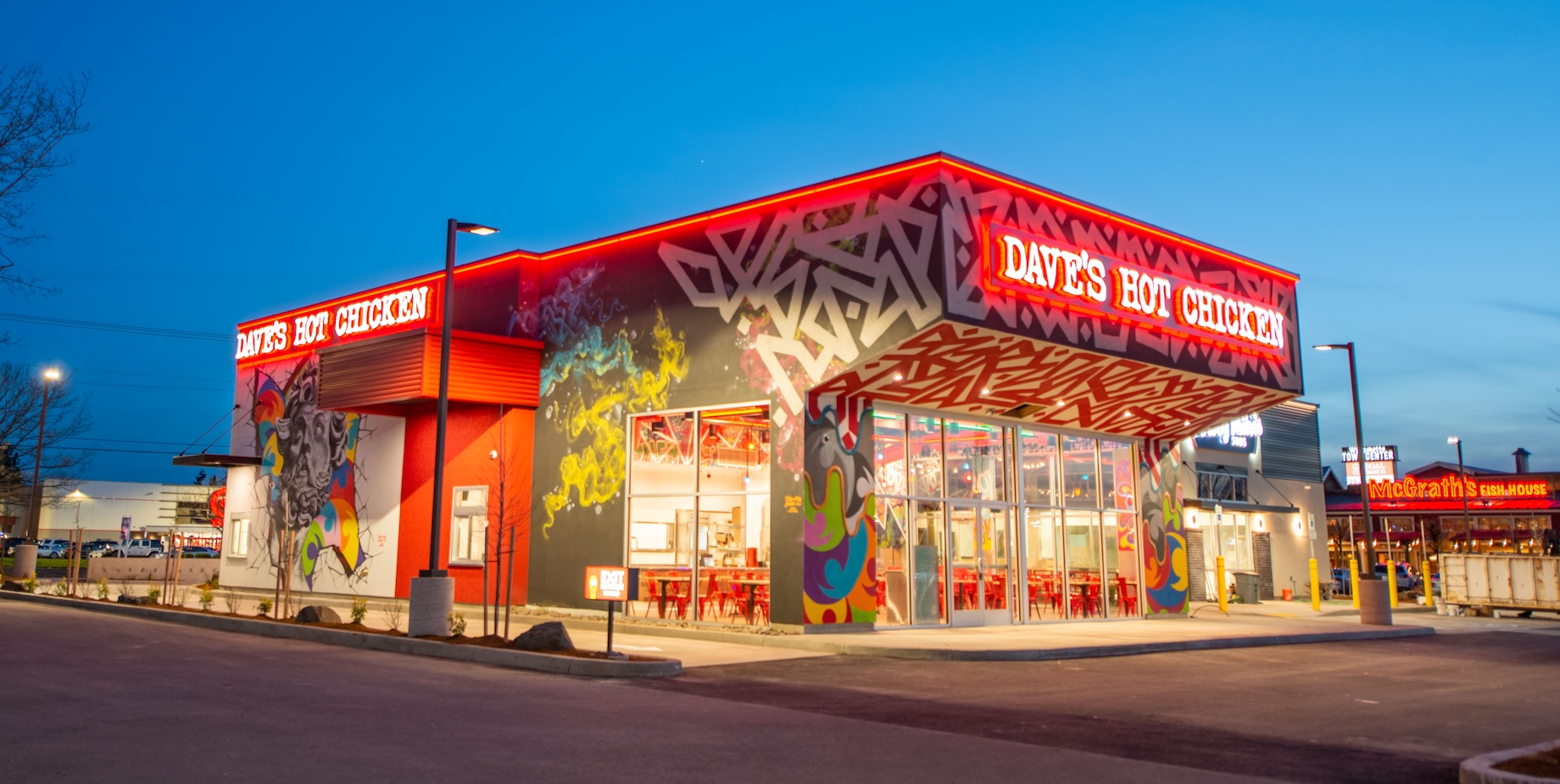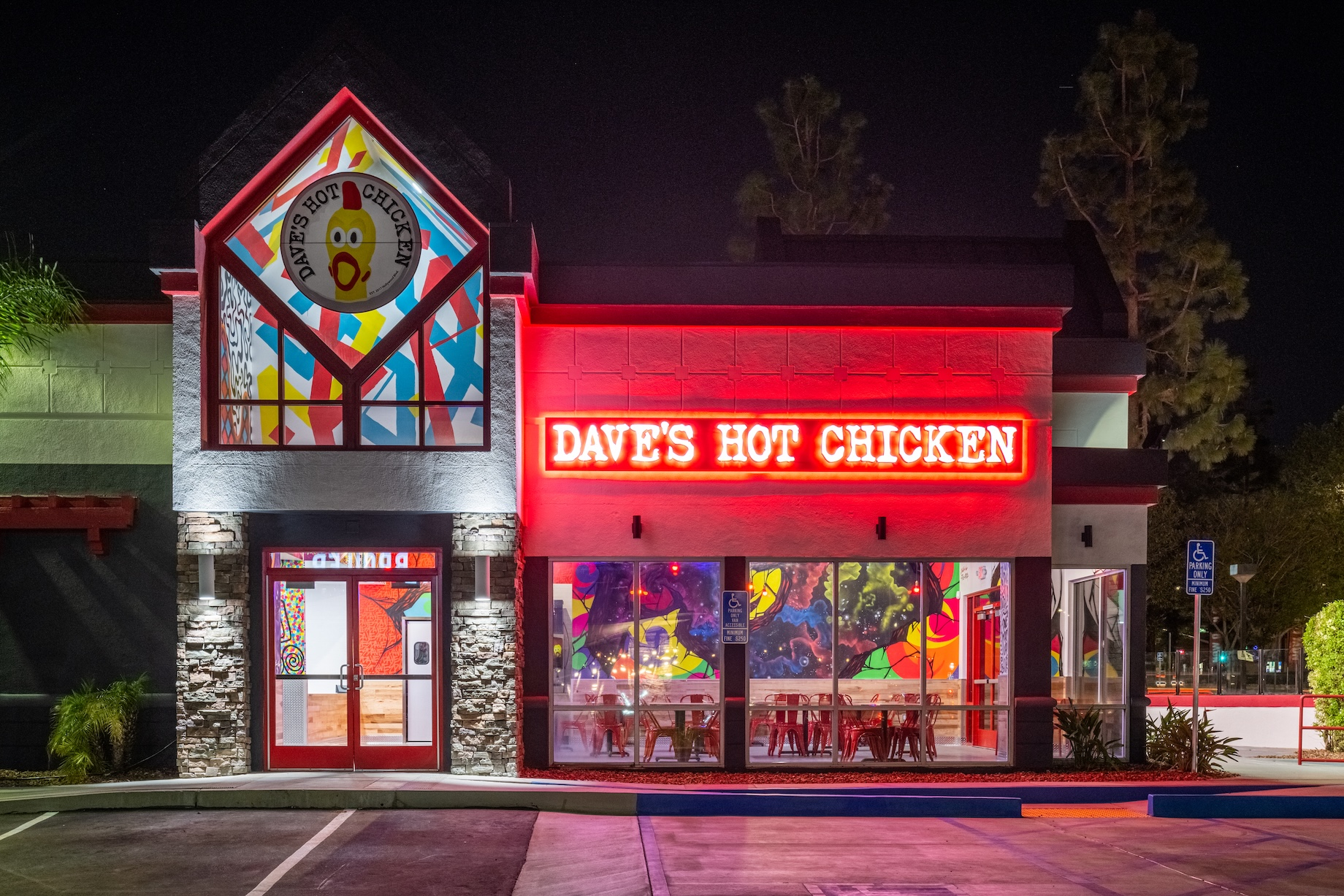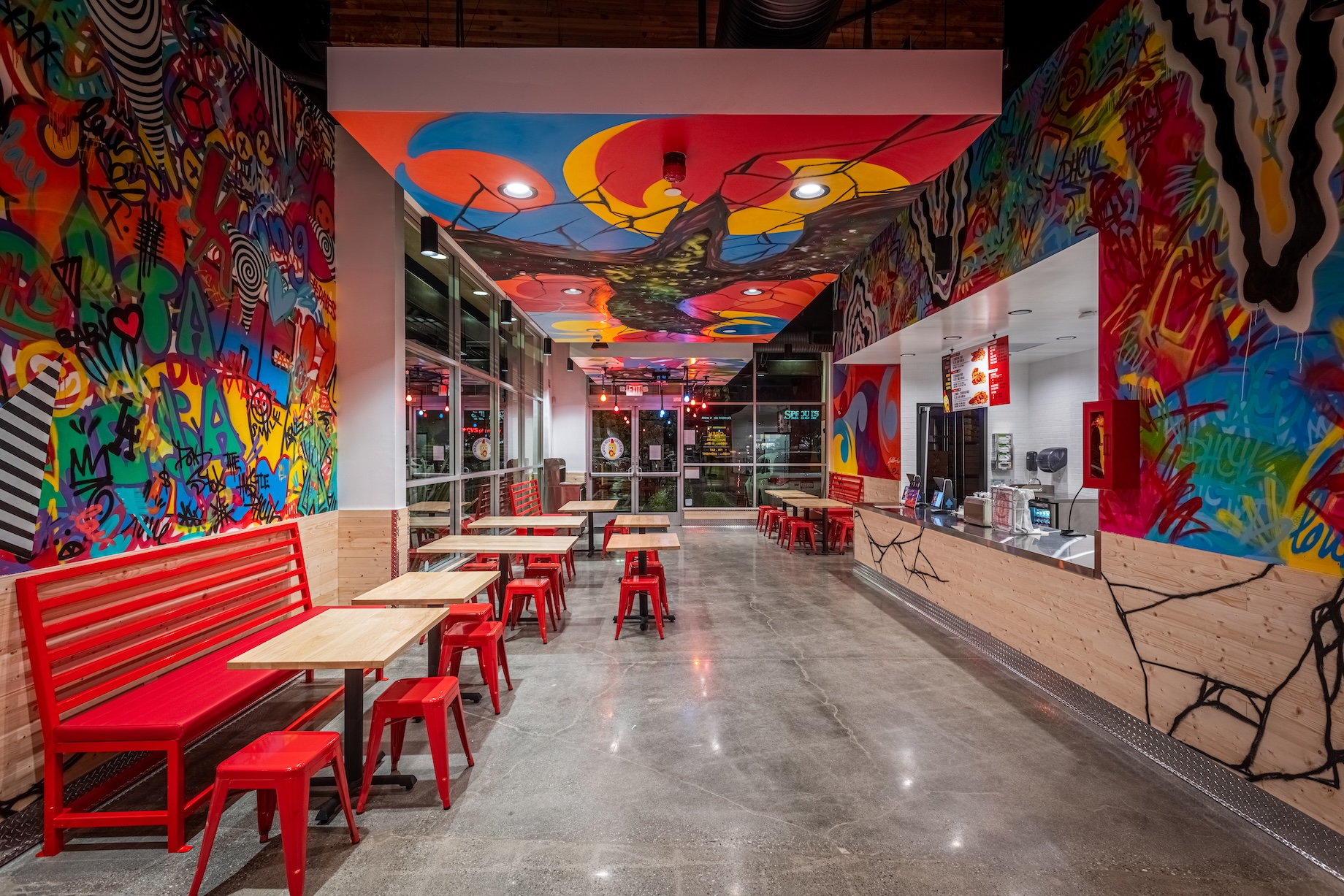Anyone who has ordered food at the Dave’s Hot Chicken counter likely has meandered over to a plaque on the wall. As the history found there goes: In 2017, trained chef Dave Kopushyan and a couple of friends spent $900 to rent a pop-up shack in a parking lot in Los Angeles’ East Hollywood neighborhood. Hauling in a fryer and picnic tables, they cooked up a popular dish born in Nashville 80 years earlier. They relied on social media marketing and managed to pocket a few dollars each night.
But soon, an Eater Los Angeles story raving about the hot chicken fueled blocks-long lines, changing their lives. Bill Phelps, who had helped guide franchise expansions of Wetzel’s Pretzels and Blaze Pizza, soon joined as CEO and brought in investors. The chain now has around 300 franchise locations across the U.S. and a handful in Canada, the U.K. and the Middle East. By the end of the year, Dave’s expects to have 100 more for about 150 openings on the year, said senior vice president of real estate Dannon Shiff, who has had similar roles at Noodles & Company and Buffalo Wild Wings. He foresees maintaining that pace over the next few years.

Dave’s Hot Chicken, which sells brined chicken with a choice of seven levels of spice from none to “reaper,” opened this Salem, Oregon, location in 2023, around the sixth anniversary of the brand’s launch. Photo courtesy of Dave’s Hot Chicken
Shiff became familiar with Dave’s at a Los Angeles ICSC event when he was leasing restaurant space for Macerich. Dave’s had just opened its second brick-and-mortar location. Less than two years later, in April 2021, he joined Dave’s. Especially appealing to him, he said, were Phelps’ involvement and the concept’s simplicity: brined chicken — with a choice of seven levels of spice from none to “reaper” — served as tenders or sliders with pickles, kale slaw and Dave’s sauce. The restaurant also offers a few side items and a variety of slushes, shakes and sodas. “When I was introduced to Dave’s Hot Chicken, I instantly fell in love with the brand,” Shiff recalled. “It was run by a great team of experienced restaurant professionals, and it didn’t have the type of big, complex menu that can be a challenge operationally.”

Dave’s has a handful locations in Las Vegas, including the one above, also pictured at top, at the Grand Bazaar Shops on the Strip, and plans to open one in Harry Reid International Airport this summer. Photo above by Joe Gose. Photo at top courtesy of Dave’s Hot Chicken
Investors in Dave’s include celebrities like Drake, Samuel L. Jackson and Michael Strahan, though that could change. The Wall Street Journal reported in February that Atlanta-based Roark, a private equity investor with $38 billion in assets under management, wants to buy Dave’s for $1 billion. Roark specializes in food-and-beverage franchisers and owns Carl’s Jr., Subway, Buffalo Wild Wings and Jimmy John’s, to name a few.
Franchise Experience Required
To date, Dave’s is working with around 75 franchisees. It wants operators with some heft, namely franchise groups that own at least five quick-service or fast-casual restaurants in a market and that know their markets well. Dave’s franchise information calls for franchisees to commit to a minimum of five restaurants and to anticipate an investment of $618,000 to almost $2 million for each one. Dave’s also wants franchisees to have liquid assets of at least $2.5 million and a net worth of at least $5 million.
“We’re looking to partner with franchisees who have scaled restaurants previously,” Shiff declared. “We want to be sustainable for the long term and have seen challenges arise when brands have partnered with someone with money who has never been in the restaurant space before. We’ve got franchisees who have operated multiple units and know what they’re doing. That has really allowed us to expand as fast as we have.”

Dave’s opened a location in Ontario, California, three years ago. Los Angeles-area artists SplatterHaus and Dehmq adorn Dave’s domestic franchises with graffiti murals. Photo courtesy of Dave’s Hot Chicken
Real Estate Requirements
Dave’s location requirements are hardly cookie-cutter. While an ideal restaurant is 2,500 square feet, the company will consider spaces roughly 500 square feet in either direction, including new construction or existing space in single-tenant buildings, strip malls, conventional shopping centers, entertainment centers and travel centers, among other settings. It has moved into former mattress and mobile phone stores and has locations on the ground floors of office buildings and apartments, Shiff said. Only about a quarter of its store fleet has drive-thrus.
Dave’s is also beginning to test smaller formats in places like food courts. It has opened a restaurant in Miracle Mile Shops at Planet Hollywood on the Las Vegas Strip, for example, and will open in the nearby Harry Reid International Airport early this summer. Los Angeles-area artists SplatterHaus and Dehmq paint graffiti murals at Dave’s Hot Chicken’s domestic locations.

Dave’s may not deploy a prototype seating design, but one thing that is typical across its restaurants is an explosion of color. Photo courtesy of Dave’s Hot Chicken
Flock of Competition
“We’re doing some fun stuff,” Shiff said. “I’m super bullish about the restaurant industry. It’s a great place to be.” For concepts bent on expansion, however, a dearth of retail development has made the restaurant industry a challenging place to be. For that reason, Dave’s helps franchisees taking second-generation restaurant space to reuse existing restrooms, exhaust hoods, coolers and other infrastructure where possible rather than rebuilding interiors whole cloth. That can not only save franchisees money but also enable them to open more quickly, he noted.
Some second-generation space simply won’t work, however. Former Red Lobster locations, for example are around 6,000 to 8,000 square feet, which generally is too big for Dave’s or other fast-casual concepts. That’s so even despite a lack of demand from full-service restaurant operators in states where the minimum wage is high, including California, New York, Washington and Oregon, Shiff observed. “The competitive landscape for fast-casual restaurant space right now is exceptional, and landlords are trying to figure out how to downsize larger second-generation spaces. But utility, construction and material costs have made splitting up those buildings more difficult, so landlords are still holding out for a full-service user.”
Meanwhile, the rise of third-party delivery services is forcing restaurants to examine trade areas more carefully, Shiff pointed out. How customers make their purchases has become part of the equation as Dave determines its growth strategy in each market. “We’re taking a measured approach as we develop our markets,” he said. “You don’t always know where your guests are coming from because third-party delivery drivers have expanded the boundaries of the historical trade area.”
By Joe Gose
Contributor, Commerce + Communities Today